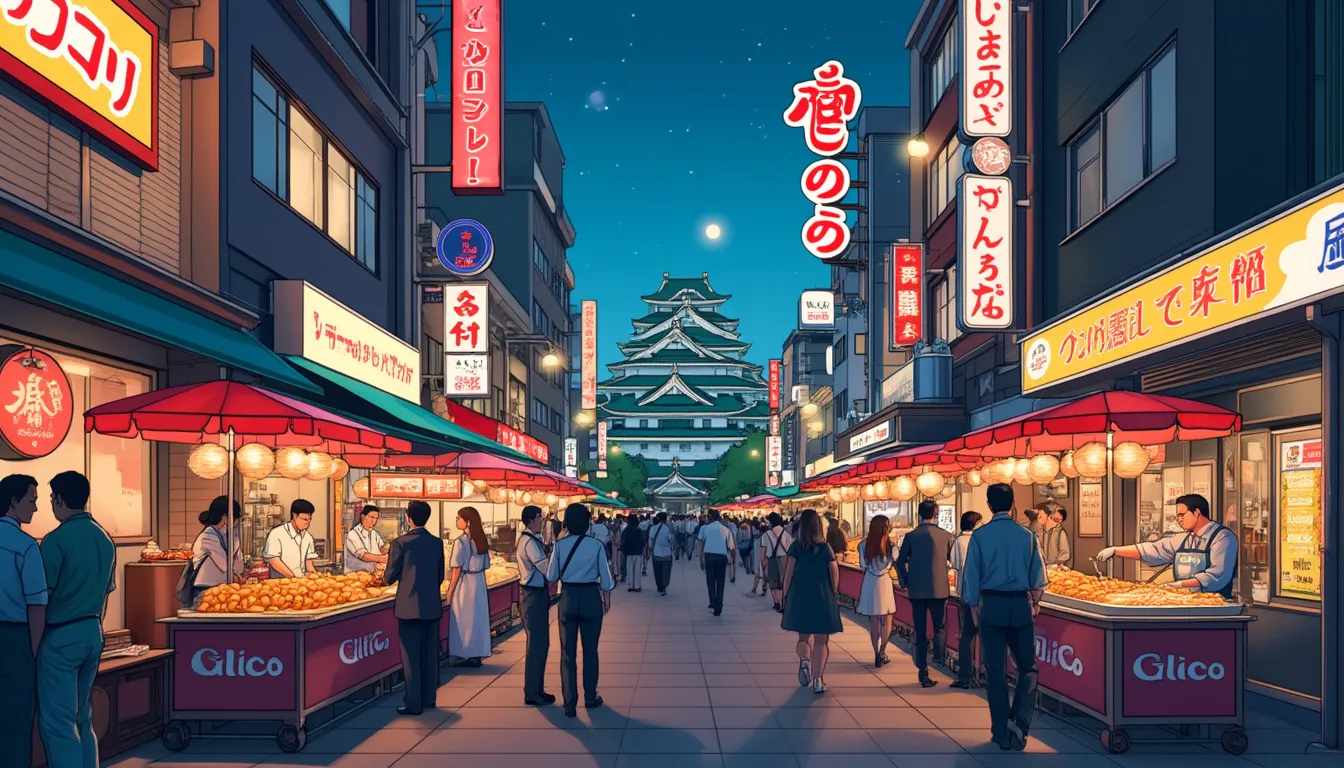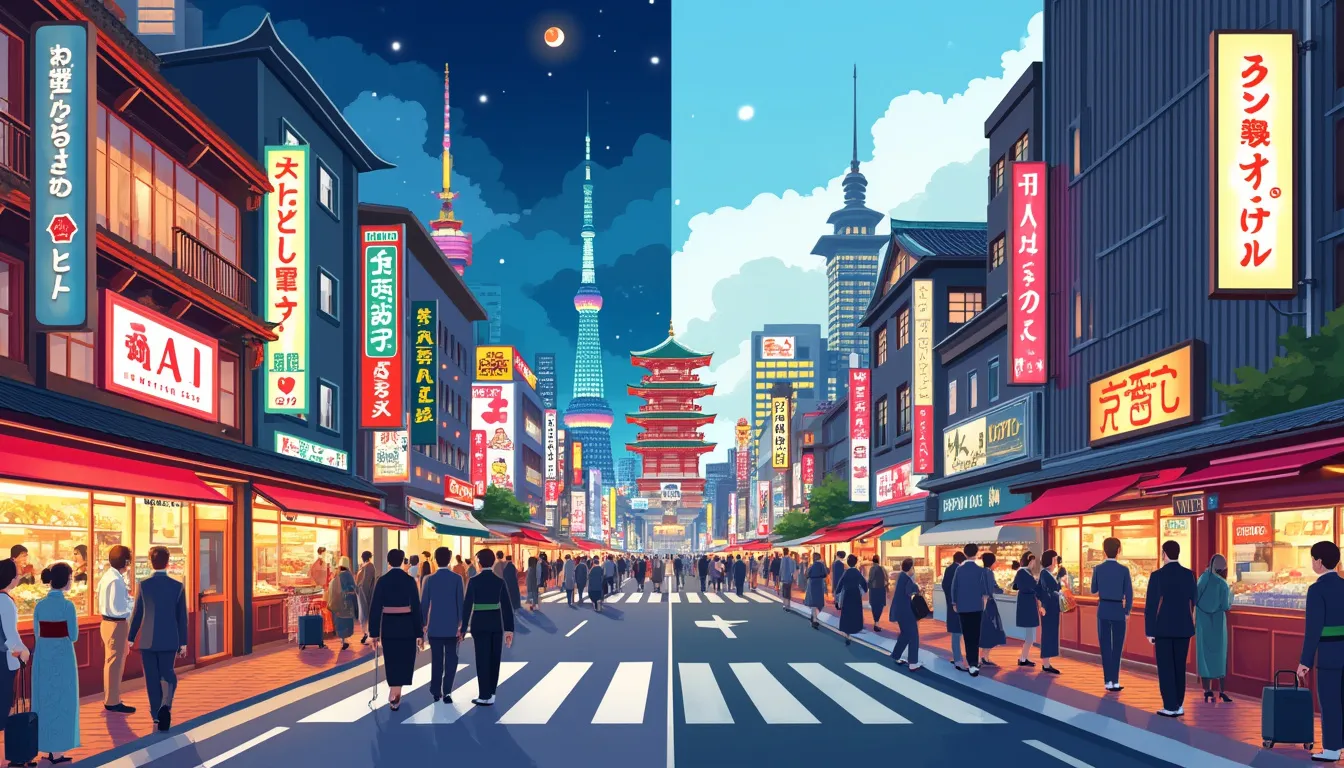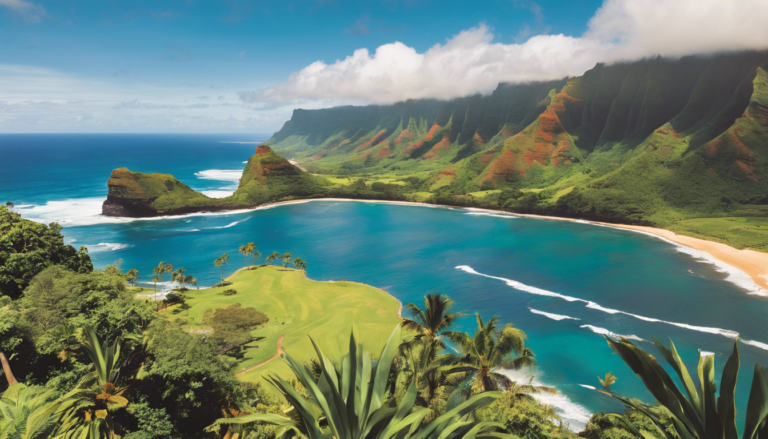When it comes to experiencing the rich tapestry of Japanese culture, few places capture the imagination quite like Osaka and Tokyo. These two iconic cities, though sharing a national identity, offer distinctly unique environments that cater to different tastes and preferences. For travelers and expatriates looking to explore the essence of Japan, understanding the nuances of Osaka versus Tokyo is essential. In delving into Osaka’s historical roots, one discovers a city that has evolved from its days as a pivotal merchant hub into a vibrant cultural epicenter. With landmarks like the majestic Osaka Castle and the bustling Dotonbori district, Osaka presents a rich tapestry of tradition infused with modern vibrancy. Here, unique experiences such as sampling local delicacies like takoyaki and participating in lively traditional festivals highlight a city where history and culture seamlessly merge.
Meanwhile, Tokyo stands as a beacon of transformation and innovation. Once the historic Edo, the city has metamorphosed into a sprawling modern metropolis that shapes global trends in technology, fashion, and pop culture. Iconic attractions such as Tokyo Tower, the world-famous Shibuya Crossing, and the serene Imperial Palace reflect Tokyo’s diverse appeal. The city’s fast-paced, ever-evolving landscape offers a magnet for those seeking cutting-edge experiences and endless opportunities.
An exploration of Osaka vs Tokyo also warrants a comparative look at lifestyle, cost, and accessibility. In Osaka, life encompasses a harmonious blend of tradition and modernity, where residents enjoy a lower cost of living and an accessible transportation network that simplifies navigation through the city’s urban yet manageable sprawl. This balance makes Osaka an attractive option for those seeking dynamic city life without the overwhelming hustle. Conversely, Tokyo exudes an exhilarating, fast-paced energy underscored by its vast array of job opportunities and an unparalleled public transport network. However, the city’s global stature brings with it a higher cost of living and a bustling lifestyle that can be both invigorating and demanding. Understanding these contrasting facets enrich the decision-making process for anyone considering a visit or relocation within Japan, providing a comprehensive snapshot of what life has to offer in Osaka versus Tokyo.
Osaka’s Historical Roots and Cultural Identity
Osaka, often referred to as the nation’s kitchen, boasts a rich tapestry of historical significance that has profoundly shaped its cultural identity. As one of Japan’s oldest cities, Osaka has played a crucial role as a thriving merchant hub since the Edo period. This mercantile spirit is still evident today, permeating its bustling streets and vibrant cultural scene. The city’s past has fostered a deep sense of community and inclusiveness, reflected in the local attitude known affectionately as ‘Osaka no Jiken’, which embodies humor and warmth.
Osaka’s historical landscape is dotted with notable landmarks that bridge the past with the present. Prominent among them is the iconic Osaka Castle, a symbol of Osaka’s historical resilience and ambition. Originally built in the late 16th century by the famous warlord Toyotomi Hideyoshi, the castle stands as a testament to Osaka’s historical significance. Although it has been reconstructed several times, the castle remains a key attraction, offering panoramic views of the city and a glimpse into Japan’s tumultuous feudal history.
Another emblem of Osaka’s cultural identity is the vibrant district of Dotonbori. Historically known as a theater district in the 17th century, Dotonbori has evolved into a bustling entertainment and nightlife area. The district is acclaimed for its neon lights, street food stalls, and the famous Glico Running Man sign. It is here that Osaka’s spirit truly comes to life, with teeming crowds enjoying local delicacies and the ever-present aroma of takoyaki and okonomiyaki filling the air.
Osaka’s cultural narrative is also intricately linked to its traditional experiences, which offer a unique insight into the city’s soul. The local cuisine is an essential part of Osaka’s culture, earning the city its epithet as Japan’s culinary capital. Visitors are encouraged to engage in the local practice of ‘kuidaore’, which translates to ‘eat until you drop’. This culinary ethos is celebrated in the diverse offerings of Kansai cuisine, from the savory pancakes of okonomiyaki to the octopus-flavored delights of takoyaki.
Festivals are another vital component of Osaka’s cultural fabric. The Tenjin Matsuri, held annually in July, is among the most renowned festivals, with a history spanning over a thousand years. The festival showcases a vibrant display of fireworks, traditional processions, and boat parades along the Okawa River, effectively capturing Osaka’s convivial spirit and reverence for tradition.
The Evolution of Tokyo from Edo to a Modern Metropolis
In stark contrast, Tokyo’s evolution from the historical Edo period to a modern metropolis narrates a story of transformation and resilience. Initially a small fishing village named Edo, the city flourished under the Tokugawa shogunate, becoming the de facto capital of Japan in the early 17th century. This historical backdrop laid the foundation for Tokyo’s emergence as a global powerhouse, renowned for its cutting-edge technology, dynamic culture, and soaring skyscrapers.
Tokyo’s skyline is adorned with numerous landmarks that symbolize its journey through time. The Tokyo Tower, reminiscent of the Eiffel Tower, stands as a beacon of the city’s post-war economic revival. It provides sweeping views of the sprawling metropolis and beyond, symbolizing Japan’s aspirations and modernization.
Another integral facet of Tokyo’s identity is the famed Shibuya Crossing, often hailed as the world’s busiest pedestrian intersection. This bustling junction epitomizes Tokyo’s frenetic energy and vibrant urban life, a microcosm of the city’s reinvention from its historical past. The crossing is an iconic filming location that highlights Tokyo’s influence on global pop culture and fashion.
The Imperial Palace serves as a poignant reminder of Tokyo’s imperial heritage, juxtaposed against the backdrop of a modern cityscape. Once the residence of the mighty shogun during the Edo period, the palace now functions as the primary residence of the Japanese Emperor. This blend of history and modernity is quintessential to Tokyo, where ancient traditions coexist with futuristic endeavors.
Tokyo’s impact extends beyond historic and architectural landmarks; the city is a vanguard of global influences in technology, fashion, and pop culture. Often described as a city where the future is born, Tokyo leads the world in fostering innovation and technological advancements. Its neighborhoods, like Akihabara, are renowned as hubs for electronics and anime culture, highlighting the city’s pioneering spirit and global cultural footprint.
As a fashion capital, Tokyo influences contemporary style with its eclectic mix of traditional and avant-garde fashion. Districts like Harajuku are famous for their bold and unconventional fashion trends, attracting the global fashion-forward crowd. Tokyo’s fashion scene not only makes a statement but also showcases the city’s embrace of diversity and individual expression.
In summary, both Osaka and Tokyo offer distinct cultural and historical narratives that contribute to their unique charm. Understanding these differences is key when considering the dynamics of Osaka vs Tokyo, offering a richer appreciation of Japan’s multifaceted identity and its two iconic cities.

**Living in Osaka: A Blend of Tradition and Modernity**
Osaka, fondly known as the Nation’s Kitchen, strikes a harmonious balance between the old and the new, offering residents and expats a lifestyle infused with both tradition and modernity. In the Osaka vs Tokyo debate, Osaka stands out for its more relaxed atmosphere, lower cost of living, and unique cultural vibrancy. As Japan’s third-largest city, Osaka provides a comfortable and affordable lifestyle without sacrificing the conveniences of a bustling urban center.
One of the notable advantages of living in Osaka is its cost of living. Compared to Tokyo, Osaka offers more affordable housing options, whether you’re looking for a cozy apartment in the heart of the city or a larger home in the suburbs. Utility costs, groceries, and everyday expenses tend to be slightly less burdensome in Osaka, allowing residents to enjoy a high quality of life without straining their wallets. This affordability is a significant attraction for both young professionals and families seeking a vibrant yet economically manageable environment.
Accessibility within Osaka is another compelling aspect of life here. The city’s transportation system is lauded for its efficiency and cost-effectiveness. The Osaka Municipal Subway provides a comprehensive network that connects different parts of the city seamlessly. Additionally, Osaka’s convenient location in the Kansai region makes it a strategic hub for travel, with easy access to nearby cities like Kyoto, Kobe, and Nara, all rich with their own cultural and historical treasures. This regional connectivity further enhances the living experience, presenting opportunities for leisure and exploration during weekends or holidays.
Osaka’s cultural scene is a dynamic tapestry of festivals, traditional arts, and modern entertainment, contributing to the city’s distinctive lifestyle. Residents enjoy a wide array of activities and events that celebrate both local culture and international influences. The Tenjin Matsuri, one of Japan’s greatest traditional festivals held annually in July, exemplifies Osaka’s vibrant community spirit, drawing locals and tourists alike. Meanwhile, the city’s eclectic mix of entertainment venues, from traditional theaters to modern nightclubs, means there is never a dull moment.
The culinary scene in Osaka is another lifestyle highlight. As a city synonymous with culinary excellence, residents are spoiled for choice with an abundance of local dishes like okonomiyaki (savory pancakes) and takoyaki (octopus balls) readily available. The abundance of eateries, from street vendors to fine dining establishments, caters to all palates and budgets, making Osaka a paradise for food enthusiasts.
In the context of Osaka vs Tokyo, Osaka’s relaxed pace of life is often emphasized as a key differentiator. While it boasts all the amenities and entertainment options of a modern metropolis, Osaka offers a less hectic and more personable living experience than Tokyo. The locals, known for their friendliness and humor, contribute to a warm and welcoming community atmosphere, which can be a refreshing change from the often fast-paced and formal lifestyle found in the capital.
**The Vibrant Hustle of Life in Tokyo**
Tokyo, Japan’s bustling capital, represents the epitome of a modern metropolis. Its vast job market, coupled with a robust public transport system, draws millions to its vibrant streets, solidifying its position in the Osaka vs Tokyo comparison as a city of endless opportunities. However, life in Tokyo comes with its own unique set of challenges and rewards, shaped by its global status and sheer scale.
One of the defining traits of living in Tokyo is its frenetic pace. The city never sleeps, with a plethora of activities, events, and attractions available at all hours. This rapid rhythm is ideal for those who thrive in high-energy environments. Tokyo’s extensive job market is another significant draw. As a global financial hub, the city offers diverse opportunities across various sectors, particularly in technology, finance, and creative industries. This appeal is amplified by the presence of multinational corporations and startups, presenting enticing career prospects for ambitious professionals and entrepreneurs.
However, with great opportunities come higher living costs. Tokyo is renowned for its elevated real estate prices and cost of living. Finding affordable housing, especially in prime areas, can be challenging. Nonetheless, many residents find the investment worthwhile due to the unparalleled career and lifestyle prospects available in the city.
Tokyo’s transport infrastructure is one of the most sophisticated in the world. Its public transport network, comprising predominantly of trains and subways, is famed for its punctuality, safety, and efficiency. While the commute can be crowded, especially during peak hours, the system’s comprehensive coverage ensures accessibility to all parts of the city. This connectivity supports the dynamic lifestyle of Tokyoites, enabling them to participate in the fast-paced urban life fully.
The city’s influence extends beyond economics and infrastructure; it is a beacon of fashion, technology, and pop culture. As a trendsetter, Tokyo hosts numerous influential fashion shows, technology expos, and cultural festivals that attract participants from around the globe. Areas like Shibuya and Harajuku are synonymous with cutting-edge fashion and youth culture, offering a glimpse into the city’s role as a global cultural leader.
In examining the lifestyle in Tokyo, it is also essential to consider the global interactions and diverse communities within the city. Tokyo’s multicultural population fuels an environment rich with international influences, allowing residents to experience a cornucopia of global cuisines, languages, and cultural exchanges. This diversity makes Tokyo a cosmopolitan melting pot, where traditional Japanese customs coexist with global practices, offering a unique living experience.
While Tokyo’s lifestyle presents challenges such as high costs and a fast pace, it simultaneously offers unparalleled exposure to innovation and global cultures. The allure of Tokyo lies in its dynamic nature, making it an attractive choice for those captivated by the energy and opportunities of city life. In the Osaka vs Tokyo spectrum, Tokyo stands as a testament to urban sophistication and global connectivity, promising an exhilarating, albeit demanding, urban living experience.
The comparison between Osaka and Tokyo, two of Japan’s most iconic cities, offers a fascinating glimpse into the diverse cultural tapestry and lifestyle choices available in Japan. Both cities, steeped in rich historical backgrounds, present unique attributes that cater to a wide range of preferences and aspirations.
Osaka, with its roots as a historic merchant city, exudes a cultural identity that is both vibrant and deeply traditional. Its rich history is vividly evident in landmarks such as Osaka Castle, a symbol of the feudal past, and the bustling district of Dotonbori, which captures the city’s bustling commercial spirit. The city’s local cuisine, famous for dishes like takoyaki and okonomiyaki, and its colorful festivals, such as Tenjin Matsuri, highlight a deeply ingrained heritage that continues to influence modern-day Osaka. The city offers a distinctive blend of living, where tradition gracefully intertwines with modernity, making it an attractive setting for those seeking a lifestyle that embraces both historical reverence and contemporary vibrancy.
In contrast, Tokyo’s evolution from the Edo period to its current status as a global metropolis showcases its dynamic transformation. Tokyo is a hub of innovation and development, standing at the forefront of technology, fashion, and pop culture. Iconic sites like Tokyo Tower, the bustling Shibuya Crossing, and the regal Imperial Palace exemplify its eclectic mix of historical reverence and cutting-edge modernity. Living in Tokyo immerses residents and visitors alike in a frenetic pace, where extensive job opportunities and a comprehensive public transportation system underline its influence as a global city. However, this vibrancy comes with challenges, including higher living costs, demanding work culture, and a lifestyle that is perpetually in motion.
In the intricate dialogue of Osaka versus Tokyo, both cities offer distinct lifestyles that suit different kinds of people. Osaka appeals to those who seek an affordable and approachable environment with a touch of traditional charm. Meanwhile, Tokyo caters to individuals drawn to the energy of a bustling metropolis, offering abundant opportunities at a premium cost. Ultimately, the choice between Osaka and Tokyo is reflective of personal preferences and professional aspirations, epitomizing the beautiful diversity inherent in Japan’s urban landscapes.







